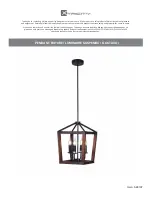
Installing the CN SignalMaster
12
CN SignalMaster FSJoin
™
Federal Signal
www.fedsig.com
EXPLOSION HAZARD: To avoid a battery explosion, always disconnect the
negative battery cable first and reconnect it last. Avoid causing a spark when
connecting near or to the battery. The gases produced by a battery can cause
a battery explosion that could result in vehicle damage and serious injury.
SEAT REMOVAL PRECAUTION: If a vehicle seat is temporarily removed, verify
with the vehicle manufacturer if the seat needs to be recalibrated for proper
airbag deployment.
REVERSE POLARITY/MISWIRING: Reverse polarity may damage the siren
amplifier. To avoid damage to the siren/amplifier, ensure that the battery
voltage is the same voltage as the rating of the light and that the correct
polarity is observed.
To wire the light bar in the vehicle:
1.
Ensure that the lines are adequately fused. From the light bar, route the CAT5
control cable into the vehicle’s cab or trunk near the planned location of a control
head that is compatible with the light bar or Serial Interface Module.
NOTE:
An input cable (24-pin harness) is provided with the Serial Interface
Module. For connections, see document P/N 2562248.
2.
Route and connect the 16 AWG black lead to the vehicle battery’s ground (–NEG)
terminal.
3.
Route and connect the 16 AWG red lead through the user-supplied 15 A fuse at the
source to the positive (+BAT) terminal.
Wiring the SignalMaster
™
Function
The SignalMaster directional warning function is configured at the factory and does
not require any additional wiring inside the light bar. All conductors necessary for
control of the SignalMaster are through the compatible serial communication control
head or the Serial Interface Module. For wiring and operation, refer to the instructions
included with the control head included with the Serial Interface Module.
Wiring the Light Bar Controls
Both the Federal Signal serial control head and the Serial Interface Module provide
the controls in Table 2 to the light bar. The table shows the corresponding control
wires from the Serial Interface Module and their colors. The wire’s first color is the
predominant color and additional colors are stripes.
For programming options, see the instructions included with the Interface Module or
the Federal Signal serial control head.






































